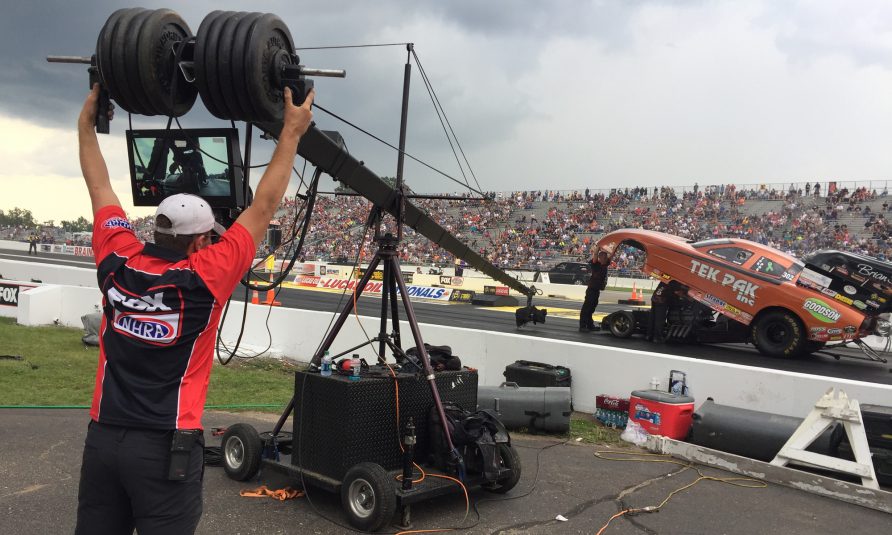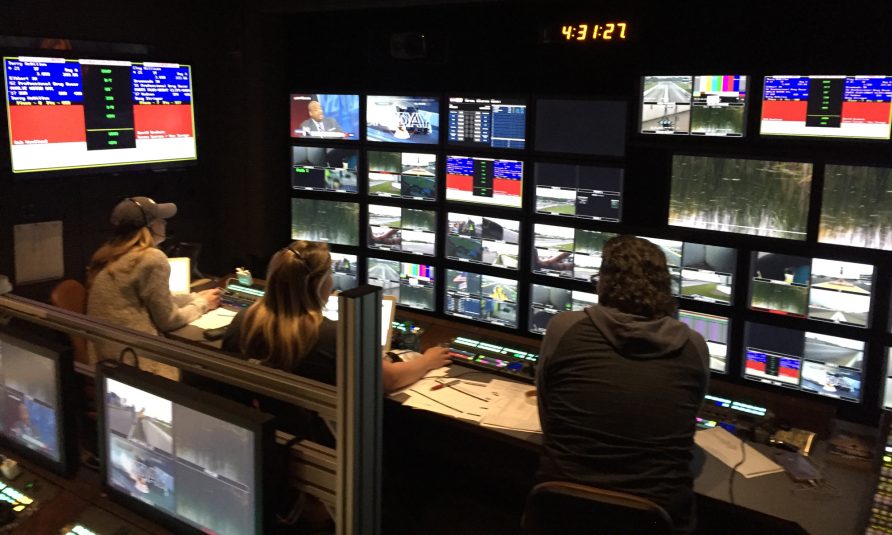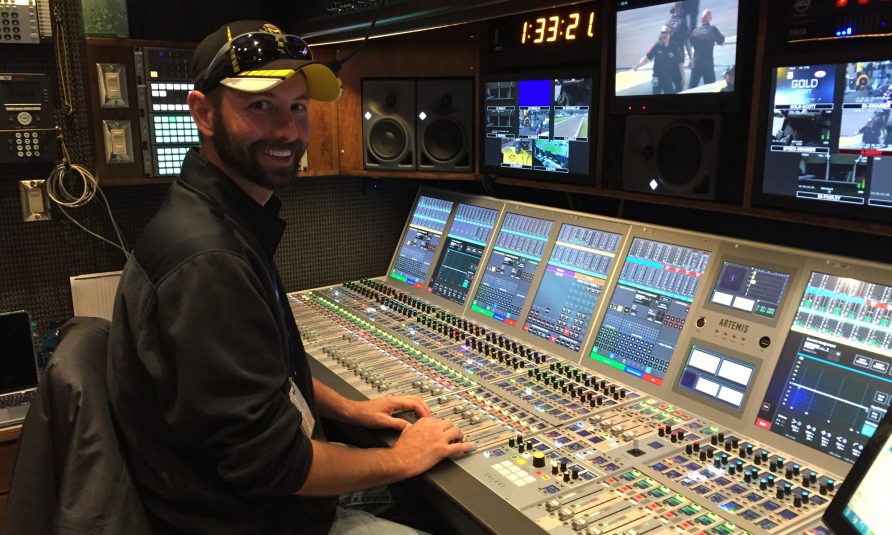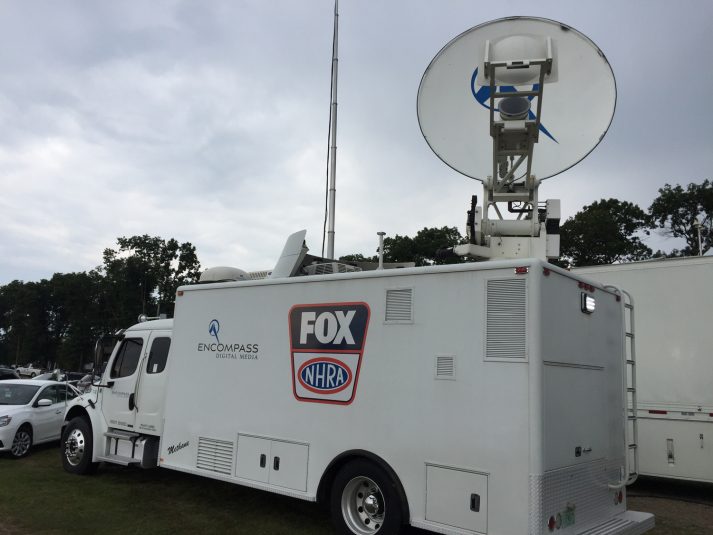NHRA Continues To Cruise in Second Year on Fox, Preps for Big Labor Day Weekend in Indy
First season in new Game Creek Nitro proves beneficial to growth of drag racing
Story Highlights
It has been an exhilarating summer on the track for the NHRA Mello Yello Drag Racing Series. Numerous times this season, NHRA telecasts have brought in more than a million viewers to FS1, as the sport enjoys an increase in interest while many other traditional sports find their numbers lagging.
It’s a live spectacle that, in person, truly tests the limits of your senses and leaves you wanting more — like the rollercoaster with the biggest drop in the amusement park. Translating that to a television audience, however, is a tremendous challenge, and the team at NHRA and NHRA on Fox have pulled out all the stops in showing off the excitement of a weekend at the track, both on and off the course.
“Of course, we want to showcase the racing, but we also want to grow this sport,” explains Ken Adelson, VP/executive producer/chief content officer, NHRA. “We want people to watch our broadcasts and think, That’s something that I want to be a part of; that’s how I want to spend my weekend.

A jib camera positioned near the starting line is one of up to 25 cameras deployed to cover an event in the NHRA Mello Yello Drag Racing Series.
“The first time I got out to one of these races,” he continues. “I saw the interaction with the drivers and how passionate people were about it. I thought this could be something fun to be a part of.”
With the support of its new Game Creek Video Nitro mobile production unit (named in honor of the loudest, most exciting engines in the competition), NHRA brings as many as 25 cameras to cover a day of racing, including a jib, three roaming RF cameras (one of which is right in the thick of the action, on the track behind the cars at the starting line), and a camera elevated above the track just behind the starting line on a tall pole (using a design first deployed in military settings).
One type of camera won’t be deployed much at an event like this: robotics.

From left: Assistant director Melissa Armstrong, producer Kymberly Booth Higgs, and director Jim Sobczak sit at the front bench of Game Creek Video Nitro during races in Brainerd, MN, last weekend.
“They’re not fast enough,” laughs NHRA Technology Executive Mike Rokosa, who spearheaded design of Nitro. “Robotic cameras trying to chase cars just wasn’t going to happen.”
The only robotics are positioned at the finish line and are used for photo-finish shots.
One can imagine for a race like this that audio is critical to telling the story. Nitro features a new Calrec Artemis console, on which board operator Josh Daniels was using four layers to mix with.
“We’re so close to the track and it’s so loud that sometimes it’s hard to tell what’s coming through my speakers and what’s coming through the door,” he jokes.
Submixer Rusty Roark has long been considered one of the best in the business when it comes to providing audio for auto-racing events on television. There are approximately 40 microphones covering just the track when you add in in-car cameras and crowd mics. There’s much more when talent mics and the like are counted.
NHRA reps are highly interested in the potential of using Dolby Atmos in the near future. The potential for a sport like this with that technology seems like a marriage made in heaven.
A typical NHRA weekend features a couple of days of tape-delayed broadcasts on Fox Sports 1 leading up to a Sunday, when they program for a live window. Much of the responsibility of the timing of that programming falls to assistant director Melissa Armstrong. Qualifying days may feature up to five or seven hours of racing that needs to be compressed into a three-hour tape-delayed block for FS1. On top of that, an NHRA race can be very fluid, with everything from crashes to rain affecting the flow of the show.
“I’ve done almost every other sport there is,” says Armstrong. “Every other sport has a clock or scheduled breaks. This doesn’t. This is constantly challenging and is different every week. If I were to go in and do the same thing on a basketball game, it would be so boring for me.”
She works hand-in-hand with producer Kymberly Booth Higgs as part of a traveling core crew that visits every track every weekend and is critical to the production’s success. Last weekend, SVG visited the team in Brainerd, MN, where the production deployment was impressive for what was a tune-up compared with the NHRA U.S. Nationals event in Indianapolis on Labor Day Weekend. It is considered by many on the NHRA team their Super Bowl-level production.


